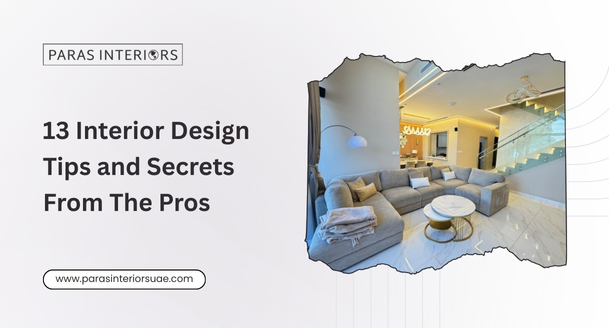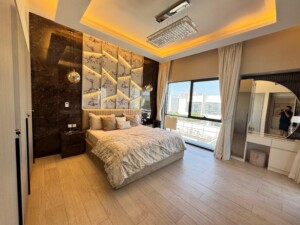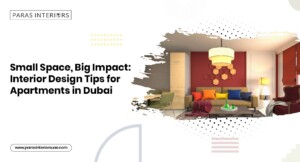
13 Interior Design Tips and Secrets From The Pros
Designing a home that feels both stylish and personal can seem like a daunting task. With endless inspiration online, it’s easy to feel overwhelmed and unsure where to begin. The good news is that you don’t need to be a professional to create a beautiful space. Often, the most stunning homes are built on a foundation of simple principles and clever tricks. The pros have a few secrets up their sleeves that can transform any room from ordinary to extraordinary.
This guide reveals 13 essential interior design tips to help you decorate your home with confidence. Whether you’re looking for general interior decorating advice or specific modern interior design tips, these insights will provide you with a solid starting point. We’ll cover everything from furniture placement to lighting, offering actionable home interior design tips that make a real difference. Let’s explore some top tips for home decorating that the experts swear by.
1. Plan Your Space with a Floor Plan
Before you buy a single piece of furniture, create a floor plan. This is a non-negotiable interior design ideas from every professional. A floor plan helps you visualize the layout, ensure proper flow, and prevent costly mistakes. You can use simple graph paper or a free online tool to sketch your room’s dimensions. Measure your space carefully, noting the locations of doors, windows, and electrical outlets. This planning phase is a crucial part of any successful design project.
2. Start with a Cohesive Color Palette
A well-defined color palette is the backbone of your design. Instead of picking colors randomly, choose three to five shades that work well together. A classic approach is the 60-30-10 rule: 60% of your room should be a dominant color (usually the walls), 30% a secondary color (furniture and textiles), and 10% an accent color (decor and accessories). This simple formula creates balance and visual interest.
3. Don’t Push Furniture Against the Walls
One of the most common decorating mistakes is pushing all furniture against the walls. Pulling your seating arrangement away from the walls, even by a few inches, creates a more intimate and conversational setting. In larger rooms, you can “float” your furniture in the center to define a cozy zone. This is one of those simple interior styling tips that makes a space feel more thoughtfully designed.
4. Layer Your Lighting
A single overhead light is rarely sufficient for any room. Professionals use a layered lighting approach to create ambiance and functionality. Combine these three types of lighting for the best effect:
- Ambient: The main source of light, like a chandelier or recessed lighting.
- Task: Focused light for specific activities, such as a reading lamp or under-cabinet lights.
- Accent: Softer light used to highlight artwork, plants, or architectural details.
5. Mix High and Low Price Points
You don’t need a massive budget to create a high-end look. One of the best interior design company tips and tricks is to mix investment pieces with more affordable finds. Splurge on the items you use most, like a comfortable sofa or a quality mattress. Then, save on decorative items, side tables, or trendier pieces that you might want to switch out in a few years. This balance creates a curated feel without breaking the bank.
6. Use Rugs to Anchor a Room
Area rugs are essential for defining spaces, adding warmth, and introducing color or pattern. A common mistake is choosing a rug that’s too small. For living rooms, the front legs of your sofa and chairs should sit on the rug. In a dining room, the rug should be large enough that the chairs remain on it even when pulled out. This simple rule helps unify the furniture and anchor the room.
7. Vary Texture and Materials
A room with only one texture can feel flat and uninteresting. Interior decor tips from the pros often emphasize the importance of texture. Mix a variety of materials like wood, metal, glass, and natural fibers. Layer different textiles, such as a chunky knit throw on a leather sofa or velvet pillows on a linen chair. This variety adds depth and makes a space more engaging.
8. Incorporate Something Black
One of the best building design secrets is to include a touch of black in every room. A black element—whether it’s a picture frame, a lamp, or a piece of furniture—provides a point of contrast that grounds the space and makes other colors pop. It adds a bit of sophistication and visual clarity, preventing the room from feeling washed out.
9. Hang Curtains High and Wide
Make your windows appear larger and your ceilings taller with this simple trick. Mount your curtain rod several inches above the window frame and extend it wider than the frame on both sides. Let the curtains hang so they just skim the floor. This technique draws the eye upward and makes the room feel more spacious and grand.
10. Bring Nature Indoors
Plants are an easy and affordable way to add life, color, and texture to any room. They purify the air and can instantly make a space feel fresher and more vibrant. Choose a mix of plant sizes and place them at different heights to create visual interest. If you don’t have a green thumb, high-quality faux plants are a great alternative. This is a top home interior tip for a reason.
11. Edit Your Collections
While it’s important to display items you love, avoid cluttering every surface. Professionals know the power of editing. Group similar items together in odd numbers (three or five is a good rule of thumb) to create a cohesive vignette. Leave some empty space—what designers call “negative space”—to allow your favorite pieces to stand out and the room to breathe.
12. Don’t Forget the “Fifth Wall”
The ceiling, often called the fifth wall, is a frequently overlooked design opportunity. Painting the ceiling a soft color, adding wallpaper, or installing architectural details like subtle molding can add an unexpected layer of interest. This is one of those design tips that can elevate a room from good to great.
13. Personalize with Art and Decor
Finally, the most important piece of interior decorating advice is to make the space your own. Your home should tell your story. Display artwork that speaks to you, photos of loved ones, and souvenirs from your travels. These personal touches are what transform a house into a home. Don’t be afraid to break a few rules to create a space that you truly love.
Frequently Asked Questions
The key principles include balance, harmony, proportion, rhythm, and emphasis. These elements work together to create a cohesive and visually appealing space.
Start with a base color and build around it using the 60-30-10 rule: 60% dominant color, 30% secondary color, and 10% accent color. Consider the mood you want to create in each room.
Use multi-functional furniture, avoid pushing everything against the walls, and create zones for different activities. Mirrors can also help make the space feel larger.
Focus on small upgrades like high-quality lighting, fresh paint, and layering textures. Mixing high and low price points can also create a curated, luxurious feel.
Avoid clutter, choosing rugs that are too small, and neglecting lighting layers. Also, ensure your furniture is proportionate to the room size.
Display meaningful items like artwork, photos, and souvenirs. Choose decor that reflects your personality and mix it with timeless design elements for a balanced look.






